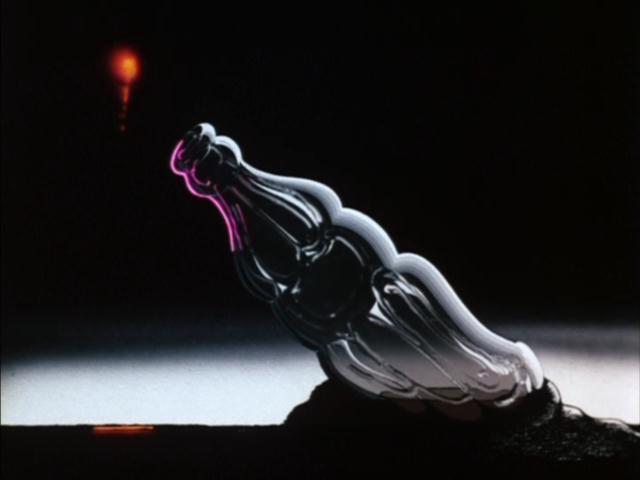Remember This Scene: 'Allegro Non Troppo'

In the past two weeks, we've been taking a look at Disney's two "Fantasia" films. First we looked at the series' seminal work, "The Sorcerer's Apprentice." The other week, we looked at the sequel's brilliant interpretation of "Rhapsody In Blue."
Today, we look at an often overlooked parody of "Fantasia" that, in some respects, is far more artistic and daring than the material it lifts from: Bruno Bozzetto's "Allegro Non Troppo."
For American audiences, foreign animation can seem like some weird artifact from another planet. The rise of anime in the western world during in the 21st century has certainly gotten us a little used to it. When most moviegoers go to, say, a Hayao Miyazaki film, they probably know they are in for a wild ride. But bizarre animation comes in many different flavors, and none so are quite as bizarre as the head trips Europe was peddling out in the 1970s.
I mean, take a look at this trailer for the french film "Fantastic Planet." Have you ever seen a trailer like this? Not a single hint is given as to what this film could possibly be about. It just banks on the hope that the endless critical acclaim and festival awards it boasts of with a monotone voice and the nonsensical, Python-esque surrealism is enough to get audiences to buy tickets. It's actually quite a brilliant film with a species conflict in the same vein as "Planet of the Apes," but you'd never know it from this insane piece of promotional work.
Likewise, "Allegro Non Troppo," boasts a visual style that prides itself on being intensely off-putting. The animations look very coarse and unpolished and often employ sexual imagery. Subtlety is kicked to the curb, as the different shorts drive home their tone with vigor. Though Bruno Bozzetto was a proud Disney superfan, he doesn't let his admiration seep into his style. Rather than go for the refined beauty that hundreds of Disney animators were able to create in "Fantasia," he embraces his status as a low-budget operation and eschews "Fantasia's" self-importance for whimsy and social commentary. This allows "Allegro Non Troppo" to avoid becoming a knock-off of a famous film and become a masterpiece in its own right.
The film kicks off with a black-and-white live-action intro, where a producer declares that audiences will be able to see classical music interpreted in ways they've never seen before. When he's informed that a "Mr. Grisney" has already beaten him to the punch on this concept, he insists he's never heard of the guy. An animator is then dragged out of the dungeon to make cartoons while the orchestra plays them in real time. The parodic elements of "Allegro Non Troppo" are thankfully confined to these interludes, allowing the shorts to stand on their own rather than directly parody Disney like "Family Guy" once did.
Like the "Fantasia" films, the shorts have their duds among them, but the successes are far more frequent and leave a better, lasting impression. The self-importance that plagues the "Fantasia" films is nowhere to be found here. While "Fantasia" needed to keep up a dignified air to prove that its cartoons were adult entertainment, and "Fantasia 2000" often felt weighed down by the responsibility of living up to its predecessor and honoring Walt's legacy, "Allegro Non Troppo" is fearless. "Fantasia 2000" used Stravinsky's "Firebird Suite" to create a dazzling display of creation and destruction, but Bozzetto uses it to create a nightmarish world of consumerism.
In his version, a claymation God creates Adam and Eve after several early errors. Then, when the serpent tries to tempt them with the Forbidden Apple, they refuse. The serpent then eats the apple himself, and is transported to a hell where he is assaulted with advertisements, traffic jams and giant boobs that pop out of TV screens. Yep, giant boobs. You won't see that coming from the Magic Kingdom anytime soon.
But the best short in the film is the one based on Maurice Ravel's "Bolero." The piece is a satire on the evolution of life. In Bozzetto's interpretation, the primordial ooze from which the first cellular life forms were born comes from the inside of a Coke bottle left behind by a spaceship. From there, Bozzetto unleashes a cavalcade of strange creatures that mutate into a parade of dinosaurs. All the while, an agitated monkey slowly plots the destruction of his fellow animals.
"Bolero" is to "Allegro Non Troppo" what "The Sorcerer's Apprentice" and "Rhapsody In Blue" are to their respective "Fantasias". It is the perfect marriage of daring animation with a perfectly picked classical score. Combined, they tell a story informed by both sight and sound, ending with a message about the impact of humanity on the planet that is very ham-fisted, but the spectacle the film takes to get us there keeps it from being irritating. It's a shame that this film never got the praise it deserved when it premiered in Italy. Only forty people showed up to the premiere, and most of them were the animators and their families. Bozzetto blames this on the fact that Italians were only interested in Disney cartoons at the time, and that's a shame, because he was able to take the "Fantasia" format and prove that it wasn't the sole property of Disney. Combining classical pieces with animation is a format that belongs to everyone, and "Allegro Non Troppo" uses it to revel in psychedelia and caricatures. It's a brilliant milestone in European animation and a forgotten gem that deserves to be cherished just as much as the works of Disney that inspired it.
Find other "Remember This Scene?" posts here.



